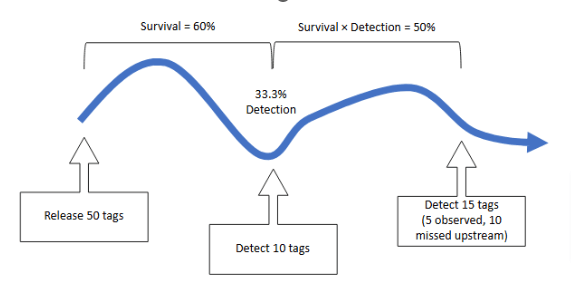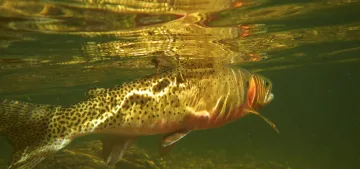At Voda IQ, we are passionate about using cutting-edge technology to advance our understanding and conservation of biodiversity. On July 14, 2024, we are excited to participate in the prestigious Joint Meeting of Ichthyologists and Herpetologists. This conference serves as a pivotal platform for us to showcase our commitment to ecological research and conservation.
The Evolution of PIT Tags
PIT tags, initially developed for livestock and inventory tracking through Radio Frequency Identification (RFID), have been miniaturized for wildlife applications. This transition has revolutionized how we study and manage various species, from salmonids to river dolphins. These tiny, cost-effective devices allow researchers to track individual animals, providing invaluable data on their behavior, health, and survival.
PIT Tag Applications
PIT tags enable researchers to delve into the intricacies of animal behavior and ecology. They provide critical insights into:
- Migrations and Movements: Tracking long-distance migrations and daily movements.
- Ecological Interactions: Understanding predator-prey dynamics and other species interactions.
- Growth and Health: Monitoring individual growth rates and health status.
- Habitat Use: Identifying critical habitats and how animals utilize them.
- Species Reintroduction: Assessing the success of reintroduction efforts and ongoing survival.
In terms of survival analysis, PIT tags are instrumental in estimating population sizes, reach-specific survival rates, predation rates, and the effectiveness of different treatment groups. This data is crucial for developing robust survival models that inform conservation strategies.
Simplifying Mark-Recapture Studies
The mark-recapture method, a staple in ecological research, is significantly streamlined by using PIT tags. For example, if 50 tagged individuals are released, and 10 are detected downstream while 15 are detected upstream (with 5 observed and 10 missed), we can estimate survival and detection rates. This straightforward approach simplifies data collection and enhances the accuracy of survival estimates.

Navigating the Regulatory Landscape
PIT tags are also pivotal in regulatory contexts. They support compliance with federal statutes such as the Endangered Species Act, Clean Water Act, Federal Power Act, and CERCLA (Superfund). Practical applications include:
- Establishing mitigation needs.
- Conducting Use Attainability Analysis (UAA).
- Hydropower relicensing.
- Evaluating environmental exposure or risk.
Balancing Strengths and Limitations
While PIT tags offer numerous advantages, such as low cost, ease of application, small size, and no battery requirement, they also have limitations. Their detection range is shorter compared to acoustic or radio telemetry, and they cannot provide 3D movement data. Additionally, detection infrastructure outside of regions like the Columbia River is limited.
Advancing Conservation Efforts with Voda IQ
At Voda IQ, we are dedicated to leveraging technologies like PIT tags to advance ecological research and conservation initiatives. Our participation in conferences like the Joint Meeting of Ichthyologists and Herpetologists reflects our commitment to fostering a biodiverse and sustainable world.
Connect with Us
Join us at the conference to explore how Voda IQ is pioneering the future of biodiversity conservation through innovative technologies. Visit us to learn more about our latest advancements and collaborations in the field.
For inquiries or to schedule a meeting, please contact:
Brian Beckley, President, Voda IQ: [email protected] | (208) 366-9663
Stay informed about our ongoing projects and insights by visiting our blog and following us on social media. Together, let’s make a difference in preserving our natural resources for future generations.










Add comment